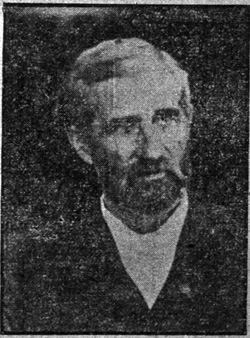The Sioux City Journal, September 29, 1901 (Photo of Civil War veteran)



The Sioux City Journal, September 29, 1901
THE BOYS IN BLUE OF ‘61
E. C. TOMPKINS
E. C. Tompkins, assistant postmaster, was a member of the Fifth New York volunteers (Duryea’s Zouaves) and of the One Hundred and Forty-sixth New York volunteers. He said:
“At Spottsylvania, on May 11, the hard fighting on the right of our line had not resulted in any particular advantage, so it was determined by Gens. Grant and Meade to try a ‘whirl’ on the left flank. During the day I had been ‘meandering’ around to the left and front of our left flank (Sixth corps), and so when the commanding general called on the chief of engineers to furnish a guide, ‘it was up to me.’
“Incidentally, it rained from noon of the 11th, all night and most of the 12th.
“I met the head of the leading division of the Second corps, who were to extend our left, at a point in the rear of about the center of the Sixth corps, at about midnight of the 11th, and guided it to the left of the line, and remained with the lead, so as to keep away from the enemy’s picket line. Everything was ready by about 4 a.m. and as soon as it was light enough a charge was made by Barlow’s and Birney’s divisions, Second corps, which carried the rebel works and cut off from their army all who were in the salient angle, capturing Division Gen. Ed. Johnson, Brig. Gen. G. H. Stewart, 20 guns and about 3,500 men.
“This salient, called the ‘Bloody Angle,’ was shaped very much like a ‘bastion’ of a fort, and as its loss endangered the whole rebel position they made desperate efforts to retake it all day, they bringing up reinforcements and our men being aided by the Fifth corps, but it was held by our men for keeps. The men of the Second corps, who were at it all day, fired over 400 rounds of ammunition per man.
“Now for the story, which is absolutely true. In this angle there was considerable timber, and there was one oak tree 22 inches in diameter that was cut down by rifle balls, falling during the evening of the 12th. Subsequently this stump was dug up and taken to Washington, where I saw it some ten years after, labeled appropriately with the facts.
“I presume some of your readers have seen it, as it was in the Smithsonian institution for many years and is probably there at this time.”



